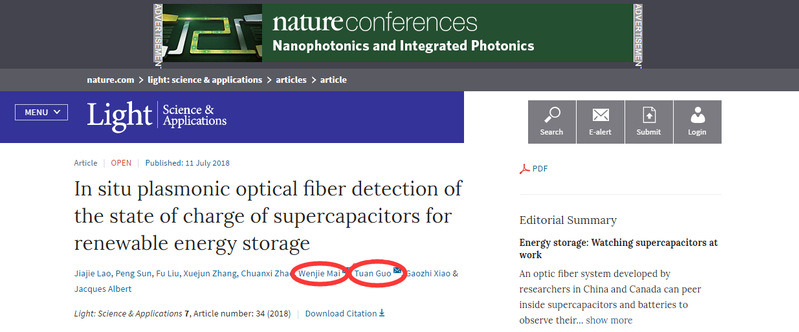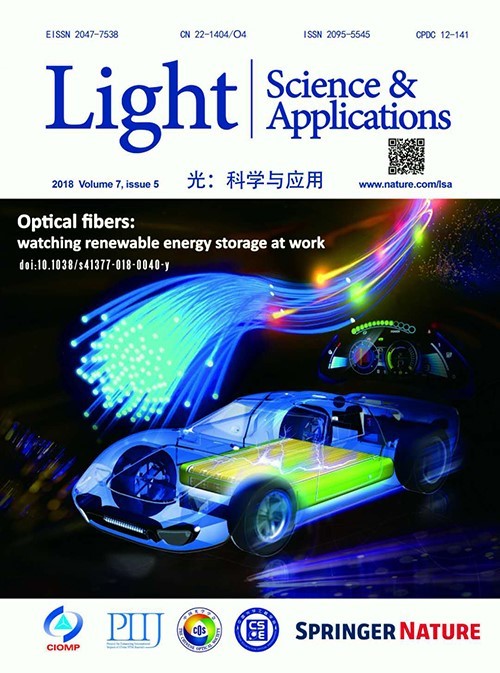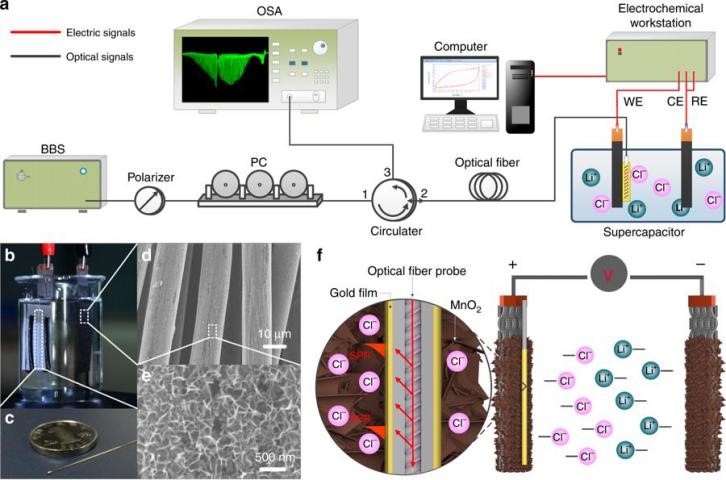- ABOUT JNU
- ADMISSION
-
ACADEMICS
- Schools and Colleges
-
Departments and Programs
- Arts College of
- Chinese Language and Culture College of
- Economics College of
- Electrical and Information Engineering College of
- Foreign Studies College of
- Information Science and Technology College of
- Environment School of
- Humanities School of
- International Business School
- International Studies School of
- Journalism and Communication College of
- Law School
- Liberal Arts College of
- Life Science and Technology College of
- Management School of
- Marxism School of
- Medicine School of
- Pharmacy College of
- Physical Education School of
- Science and Engineering College of
- Shenzhen Tourism College
- Research Institute
- Research Center
- Programs in English
- Majors
- Study Abroad
- Online Learning
- RESEARCH
- CAMPUS LIFE
- JOIN US
JNU makes progress in in-situ optical fiber monitoring
Time: July. 21st, 2018
Source: Office of Scientific Research and Development
The National Natural Science Foundation of China has published the research results of JNU Professors Guo Tuan and Mai Wenjie, who have made progress in the field of in-situ optical fiber monitoring in energy storage devices. Their project team has developed a high-precision electrochemical surface plasmon resonance optical fiber sensor.

This research, published on July 11, shows that the team has designed real-time, in-situ and multi-parameter high-precision detection of energy storage devices in a charged state; solved the bottleneck of online monitoring; and provided a comprehensive, whole-process and lifelong monitoring program.
Guo and Mai published a research paper titled In Situ Plasmonic Optical Fiber Detection of the State of Charge of Supercapacitors for Renewable Energy Storage as the cover paper of the journal Light: Science & Applications (IF = 13.625) on June 6. Their project is supported and funded by the National Outstanding Youth Science Foundation of China (Program No. 61722505).

(The cover of Light: Science & Applications)
Abstract:
In situ and continuous monitoring of electrochemical activity is key to understanding and evaluating the operation mechanism and efficiency of energy storage devices. However, this task remains challenging. For example, the present methods are not capable of providing the real-time information about the state of charge (SOC) of the energy storage devices while in operation. To address this, a novel approach based on an electrochemical surface plasmon resonance (SPR) optical fiber sensor is proposed here. This approach offers the capability of in situ comprehensive monitoring of the electrochemical activity (the electrode potential and the SOC) of supercapacitors (used as an example). The sensor adopted is a tilted fiber Bragg grating imprinted in a commercial single-mode fiber and coated with a nanoscale gold film for high-efficiency SPR excitation. Unlike conventional bulk detection methods for electrode activity, our approach targets the localized (sub-μm-scale) charge state of the ions adjacent to the electrode interface of supercapacitors by monitoring the properties of the SPR wave on the fiber sensor surface located adjacent to the electrode. A stable and reproducible correlation between the real-time charge–discharge cycles of the supercapacitors and the optical transmission of the optical fiber has been found. Moreover, the method proposed is inherently immune to temperature cross-talk because of the presence of environmentally insensitive reference features in the optical transmission spectrum of the devices. Finally, this particular application is ideally suited to the fundamental qualities of optical fiber sensors, such as their compact size, flexible shape, and remote operation capability, thereby opening the way for other opportunities for electrochemical monitoring in various hard-to-reach spaces and remote environments.

(Electrochemical surface-plasmon-resonance sensing principle and experimental demonstration with a gold-coated TFBG optical fiber sensor.)
Link to paper: https://www.nature.com/articles/s41377-018-0040-y
NEWS
- About the University
- Quick Links
Copyright © 2016 Jinan University. All Rights Reserved.




